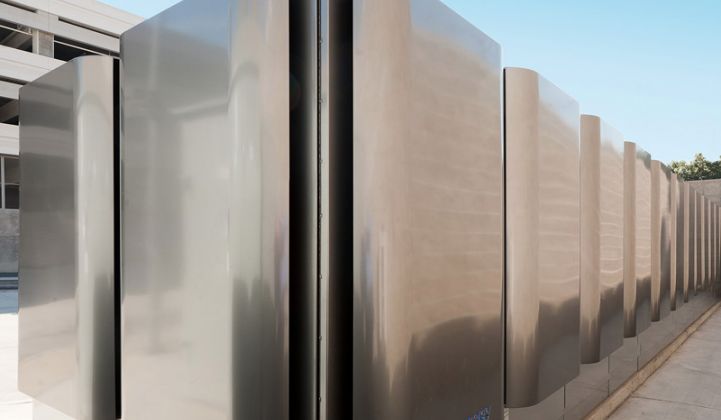Fuel cell maker Bloom Energy reported better-than-expected third-quarter 2018 revenues on Monday, while also taking a hit on construction delays and marking a one-time stock compensation expense to ensure its employees didn’t see their options wiped out from the company's July IPO.
Wall Street hasn't reacted too favorably. At the time of publication, Bloom's stock was down by more than 20 percent following yesterday's earnings report.
Bloom reported revenues of $190.2 million for the third quarter, up from $93.8 million in the same quarter last year, and beating Wall Street estimates of $186 million.
Revenues for the first nine months of 2018 were $376 million, compared to $208.5 million for the same period in 2017. The majority of this growth was driven by this year’s reinstatement of the federal Investment Tax Credit for Bloom’s solid oxide, methane-powered fuel cells, CFO Randy Furr noted on Monday’s conference call.
The Sunnyvale, Calif.-based company reported a loss of $78.6 million, or 97 cents per share, for the quarter — a figure that included a one-time stock-based compensation of $72 million. Excluding this, the company lost 13 cents a share in the quarter, compared with a loss of 78 cents a share a year ago, and beating analyst expectations of a loss of 19 cents per share.
The unusually high stock-based compensation during the quarter came from true-up grants to make whole employee stock options that had an average strike price of $29.71, well above the $15 IPO price.
“We made a strategic decision to treat them fairly and bring them to the market,” CEO KR Sridhar said in Monday’s conference call. The true-up grant expense is expected to increase stock-based compensation expense by about $55 million in the fourth quarter of 2018, and gradually decline to zero by the end of next year.
Bloom also reported lower-than-expected gross margins of 12.3 percent, driven by lower-than-expected “acceptances,” which measure installations of its fuel cells that can be reported on the quarter’s profit and loss statements. As measured in 100-kilowatt systems, Bloom saw 206 system acceptances in the third quarter, well below its guidance of 215 to 230 acceptances for the quarter.
This slowdown was driven by construction and interconnection delays from a variety of causes, Sridhar said. Those included wildfires in California and hurricanes in the U.S. Southeast, as well as labor strikes and seasonal delays.
Acceptances may continue to be reduced through the fourth quarter, as customers such as retailers or data centers delay construction for seasonal reasons, Sridhar said.
Bloom shares fell precipitously after Monday’s earnings announcement, dropping from $23 per share to as low as $18.60 per share in Tuesday morning trading. The company, which raised about $1.5 billion, had an accumulated deficit of $2.3 billion as of March 31, 2018, and expects to “incur net losses on a GAAP basis for the foreseeable future.”
Sridhar came under fire shortly after Bloom’s IPO for stating that the company would be “cash-flow positive and GAAP-profitable this year,” a claim the company had to walk back.
On Monday’s conference call, Sridhar concentrated on touting Bloom’s benefits as an on-site power source that can provide backup in case of grid outages, as its data center systems in North Carolina and Japan did during recent hurricanes and typhoons. He also promoted Bloom as an off-grid power source fueled by locally derived biogas, as Bloom is piloting in California and India.
Bloom is also in the final stages of closing its 8.35-megawatt deployment with South Korean utility Kepco, using a “Bloom Power Tower” configuration that stacks several fuel cells vertically, allowing more generation capacity per unit of floor space, he said.
CFO Furr also clarified what he called several misconceptions about the company’s finances, including the structuring of its debt and its reliance on a relatively small number of large customers for a majority of its revenue.




